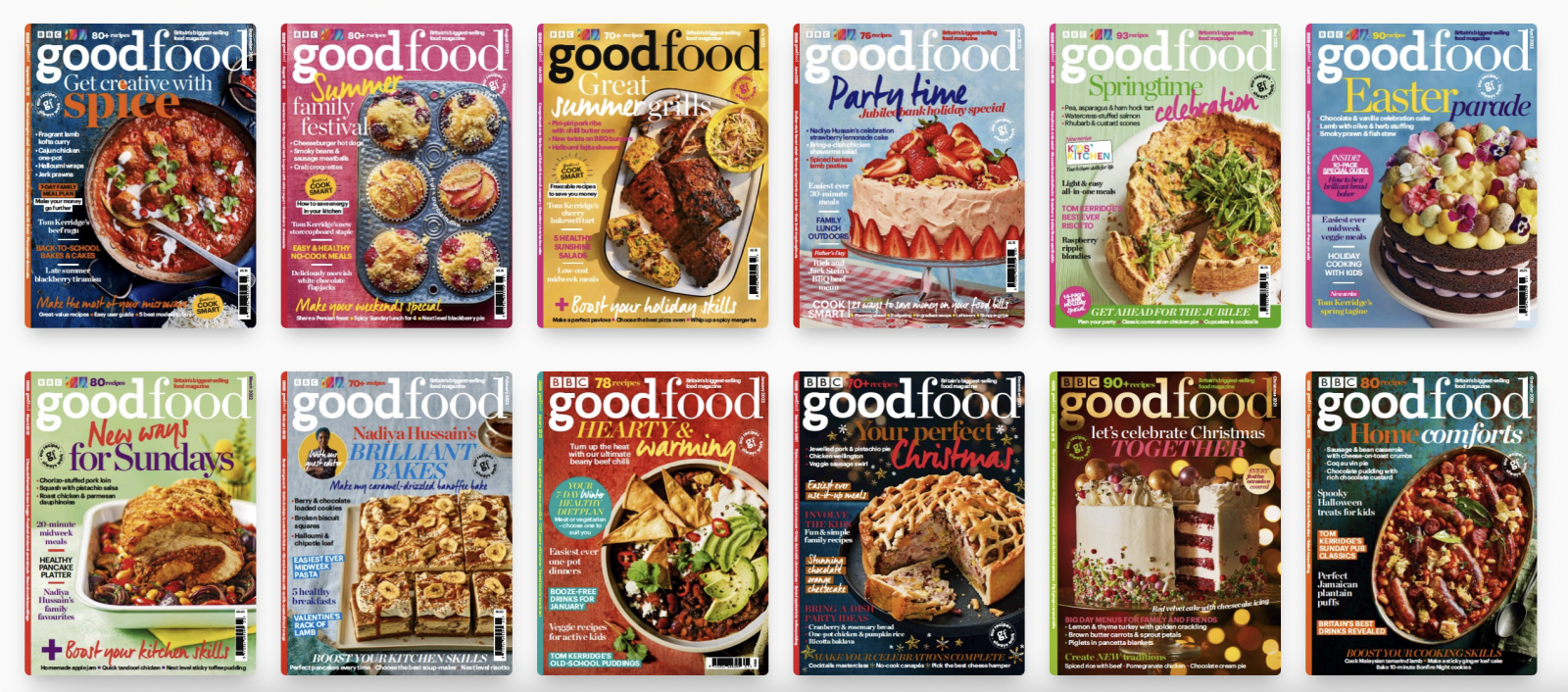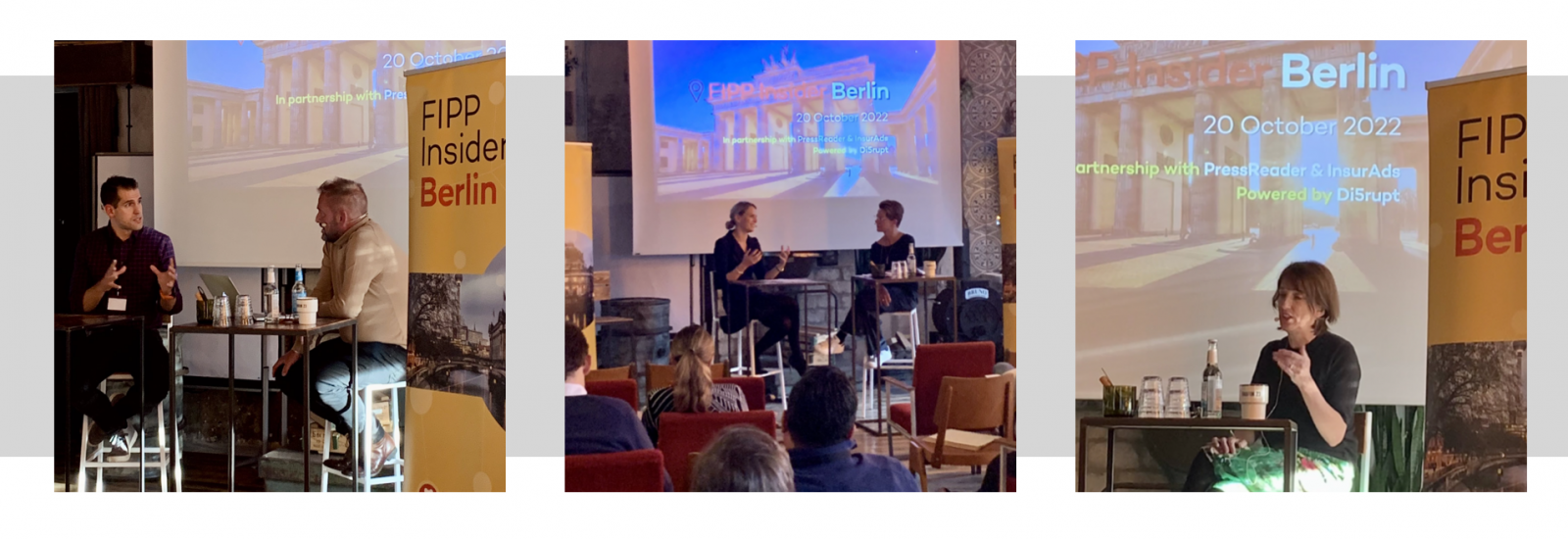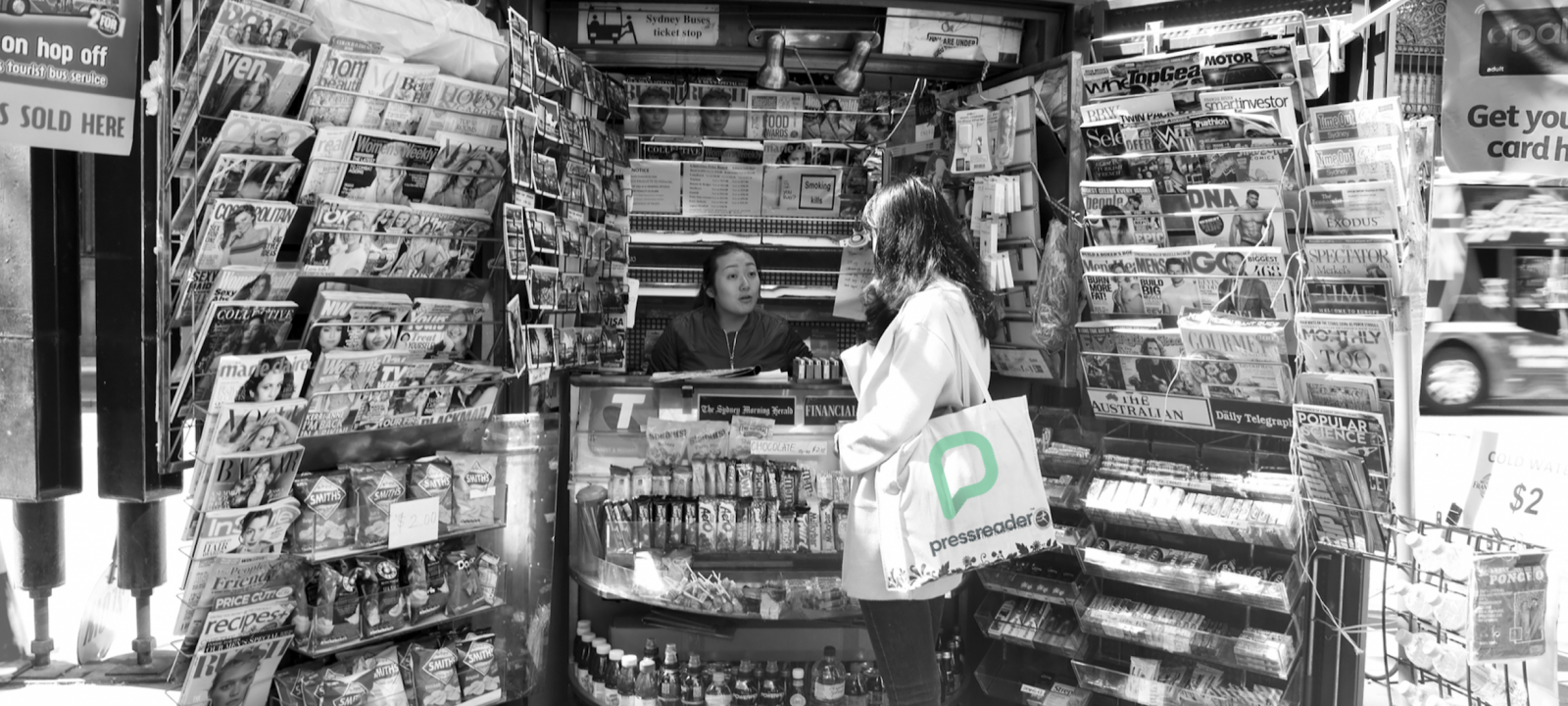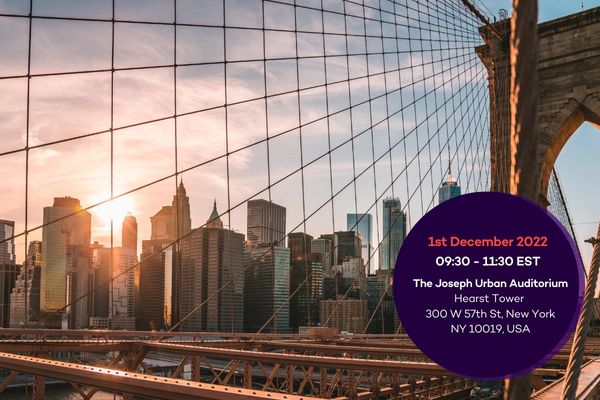Key insights from FIPP Insider Berlin, featuring BILD Group, Burda, PressReader and more
Yesterday’s FIPP Insider Berlin event was filled with insights, particularly from a mixed monetisation pov. Taking place at Fabrik 23 in Berlin, Germany, directly after the all-new Media Makers Meet (Mx3) conference, the succinct afternoon format provided a varied speaker programme with lots of additional input from the audience.
In setting the scene for the global media industry at large, and framing the wider debate, FIPP President & CEO, James Hewes, offered a frank assessment of the state of the industry today:
“It’s funny in some ways that we’re still talking about digital transformation today. Because of course if you’re a start-up operating in the media tech space, there’s no real transformation about it that’s just what you do. The same goes for the latest generations digital natives on the consumer side.”
“And one area we really need to do better as an industry on is digital subscriptions pricing. If you look at it, we’re basically bombarding people with offers positioned in the same way we would have positioned print subscriptions 20yrs ago. We were really good at print subs, and suddenly in digital, we all seem to have lost our collective minds and think we can’t do it anymore! But of course we can, it’s just that we can’t hope to just directly transfer what we were doing back then to the marketplace of today.”
“One thing that’s fair to say though, is that influencers are not journalists, and what we do still has extreme intrinsic value. So again, it’s a case of better making that case going forward, and demonstrating our real worth to audiences.”

Hewes was followed on-stage by Simon Stilcken, Head of Business Development, for Burda International
“I think the first thing to say from our pov, is that there are all different types of communities out there… gamers, foodies, cyclists, whoever it may be. So a key priority for Burda is creating content that creates high emotional involvement, and taps into the passions of those groups”
“There are all sorts of touchpoint through which you can touch a foodie tribe for example and BBC Good Food represents a successful example of doing so. In addition to the magazine and digital recipes, there are events, webinars, exclusives, and those sorts of activities all allow us to play more of an active role in those communities, as opposed to just shouting into the ether.”
“I haven’t been in the industry for 20yrs myself, but when I look at how we have transformed even over the past two years, that is significant. Our work now is about creating bilateral relationships with readers, and by way of a lot of social media monitoring and direct feedback, I like to think we’ve arrived at a better idea of what our communities want, and how we can better server them.”
It was an approach that was echoed by ACNR’s Rachael Hansford, who told us prior to the event that when she first set up the independent publication in the early noughties, she felt “a bit like the Wizard of Oz, hiding behind a curtain and pretending to be bigger than I was!”

Since then, the Advances in Clinical Neuroscience & Rehabilition Journal has come along way, but still remains dedicated to its niche community, working within the parameters of a unique sector.
“Medics have to be constantly upskilling, participate in peer reviews, and constantly reading the latest research,” the publication’s co-Founder and Publisher told the Insider audience. “They’re five years at medical school and then I think it usually takes 8-10yrs by the time they reach the position of Consultant Neurologist, so it’s certainly a captive audience!”
“My journal is an advertising funded model, because we wanted to get that information out to as wide an audience as possible, and I already knew from my previous positions that an ad-funded model in that sort of sector could work.”
Advertising funded models were certainly high atop the agenda of InsurAds co-Founder & CEO, Andre Tomas Parreira, who expressed the need for the industry to maintain a mixed monetisation model, despite the recent allure of subscription options.
“Of course, the subscription model is what everybody wants,” said Andre Tomas Parreira, co-Founder & CEO of InsurAds. “But the fact is that publishers tell us they cannot get more than 2% of their audiences to subscribe, and 98% is a lot to leave on the table. There are ways to evolve the traditional advertising model, and we believe that switching to attention-based metrics is the future. A hybrid approach, combining both subscription and advertising revenues, remains critical.”

PressReader provided some interesting insights into pandemic reding habits that you may not previously have thought of.
“Well if you think about it, a lot of our partners at PressReader are in the tourism industry,” said Hugo Merino Montero, Director of Branded Editions. “So that would include the likes of hotels, airports, airlines, etc., who just weren’t getting the footfall during the pandemic. Conversely, libraires saw a massive influx in consumption. You wouldn’t necessarily have thought that, because again, people weren’t able to actually physically go. But a lot of library services these days are about remote access, and people were accessing them a lot during the period.”
Finally, we got some key insights from BILD Group’s Managing Director, Carolin Hulshoff Pol, who we also ran an exclusive interview with in the run-up to the event. The Axel Springer brand has been a pioneer in digital transformation in recent years, and continues to lead the charge.
“We realised that we could create clusters of users, which would help with both content and pricing. Those demographics are updated every night and that means having a big team. This in itself of course creates its own challenges. You bring a lot of development talent in, all with amazing technical skills, biut the work itself remains a very creative process and so of course its adding analysis to – and outcomes from – all the data.”
“Our digital subscriber base is now around 630,000, and we literally just started out loyalty club a couple of weeks ago, which saw an instant spike of 11,000 subscribers. Really, we know that if we just keep in regular contact with people, and keep offering them value, then revenuies will grow. As a traditional newspaper brand, it’s also nice to get more direct feedback from your audiences. Because back in the day, in print, BILD was really just publishing and distributing – now we are having direct conversations.”
Insider will next be rolling into NYC at the beginning of December, and you can find out more abot that one here.











